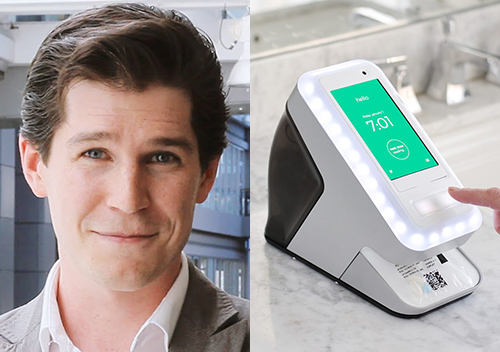Could biometrics increase security and safety of clinical laboratory patient identification and specimen tracking processes as well?
Positive patient identification is a common problem for all healthcare providers, including medical laboratories. That is why there is strong interest in developing technologies that use biometric data to identify patients. The challenge has been to find a biometric solution that has acceptable accuracy and can make the positive identification in a speedy fashion, particularly when the patient presents for service or to provide a clinical laboratory specimen.
One Canadian company believes it has a biometrics-based solution almost ready to bring to market. AceAge, Inc., a Canadian healthcare technology company, recently added facial recognition software to their Karie at-home medication dispensing appliance, according to Biometric Update. The Ver-ID facial recognition authentication application they chose was developed by Ontario-based Applied Recognition, Inc.

Karie (above right) is designed to help patients accurately schedule, monitor, and take their medications. The companion facial recognition software—one of several security features—will enable homebound individuals who use mobile devices or the Internet to electronically sign-in and notify caregivers that medication was taken as ordered, an AceAge news release noted. “Now, our end users can dispense their prescriptions at a glance and without worry that, for example, a child might inadvertently get access. This will help bring security to medication in people’s homes,” Spencer Waugh, AceAge’s CEO (above), stated in the news release. (Image copyright: AceAge.)
The new Karie automated solution, is expected to launch later this year. Developers anticipate that the facial recognition feature also could be of value to researchers in late-stage clinical trials, where documentation of medication adherence is critical.
How Does Facial Recognition Software Work?
According to Applied Recognition, Ver-ID uses an algorithm that is more than 99% accurate in detecting and recognizing faces. Here’s how it works:
- A patient registers his or her face using the camera on a mobile device or camera-enabled computer;
- The patented Ver-ID algorithm matches 75 points and creates a “facial print” or “signature,” capturing unique features;
- Then, as the person uses their mobile device or computer, the facial signature is authenticated against the registered signature to control access to the app or device.
AceAge’s Karie device would authenticate the patient’s facial image against a stored facial signature in the same manner.
Fingerprint Readers Give People Identity, Care Access in Africa
Danny Thakkar, co-founder of Bayometric of San Jose, Calif., a global provider of fingerprint scanners and biometric software, says biometrics improves patient identification and is faster and more reliable than manual identification of patient records in a master patient index.
“The process of patient enrollment and admission becomes fast and hassle-free as a simple biometric scan is all it takes to identify and admit a patient,” Thakkar noted in a blog post.
In fact, biometrics technology has made it possible for residents of developing countries, without driver licenses or credit cards, to secure identity and access to healthcare services, according CNN.
COHESU, a Kenyan community health charity, is reportedly working with Simprints, a nonprofit technology company in the UK that makes fingerprint scanners for mobile platforms and charities worldwide, to implement biometrics for patient identification.
After having their fingerprints registered by the Simprints biometric scanner, Kenyan patients receive a unique identifier that can be matched to their healthcare records. Caregivers use mobile apps to access their patients’ health records and review or update them, CNN reported.
“Biometrics as a technology has completely changed our way of thinking. Without it, they would probably stay at home and accept their fate,” Nicholas Mwaura, a systems and database administrator with COHESU told CNN.
Hospitals Have Outdated Patient ID Methods, Says HealthsystemCIO Survey
Meanwhile, 42% of hospital CIOs acknowledged in an Imprivata/HealthsystemCIO.com survey that patient matching is a top priority at their organizations, according to a news release. Another 24% of CIOs surveyed said patient matching is not a priority, but it should be.
“Many hospitals still rely on methods that do not guarantee accurate patient identification, such as a person’s date of birth or a health insurance card. By implementing a registration solution—such as biometric identification technology—that accurately identifies patients and matches them with their correct EMPI (enterprise master patient index) and EHR (electronic health record) records, hospitals can reduce the very real risks highlighted in this survey,” Sean Kelly, MD, Imprivata’s Chief Medical Officer, told EHR Intelligence.
Clinical laboratory leaders already use processes and software to identify patients and match them with records and specimens. In the near future, biometric facial recognition might provide additional patient identification, safety, and medical laboratory security.
—Donna Marie Pocius
Related Information:
Medication Delivery Device Maker Adds Ver-ID for Biometric Patient Verification
Biometrics for Accurate Patient Identification
How Biometrics is Giving Identities to ‘Invisible Citizens’
42% of Healthcare CIOs List Patient Matching Issues a Top Priority



